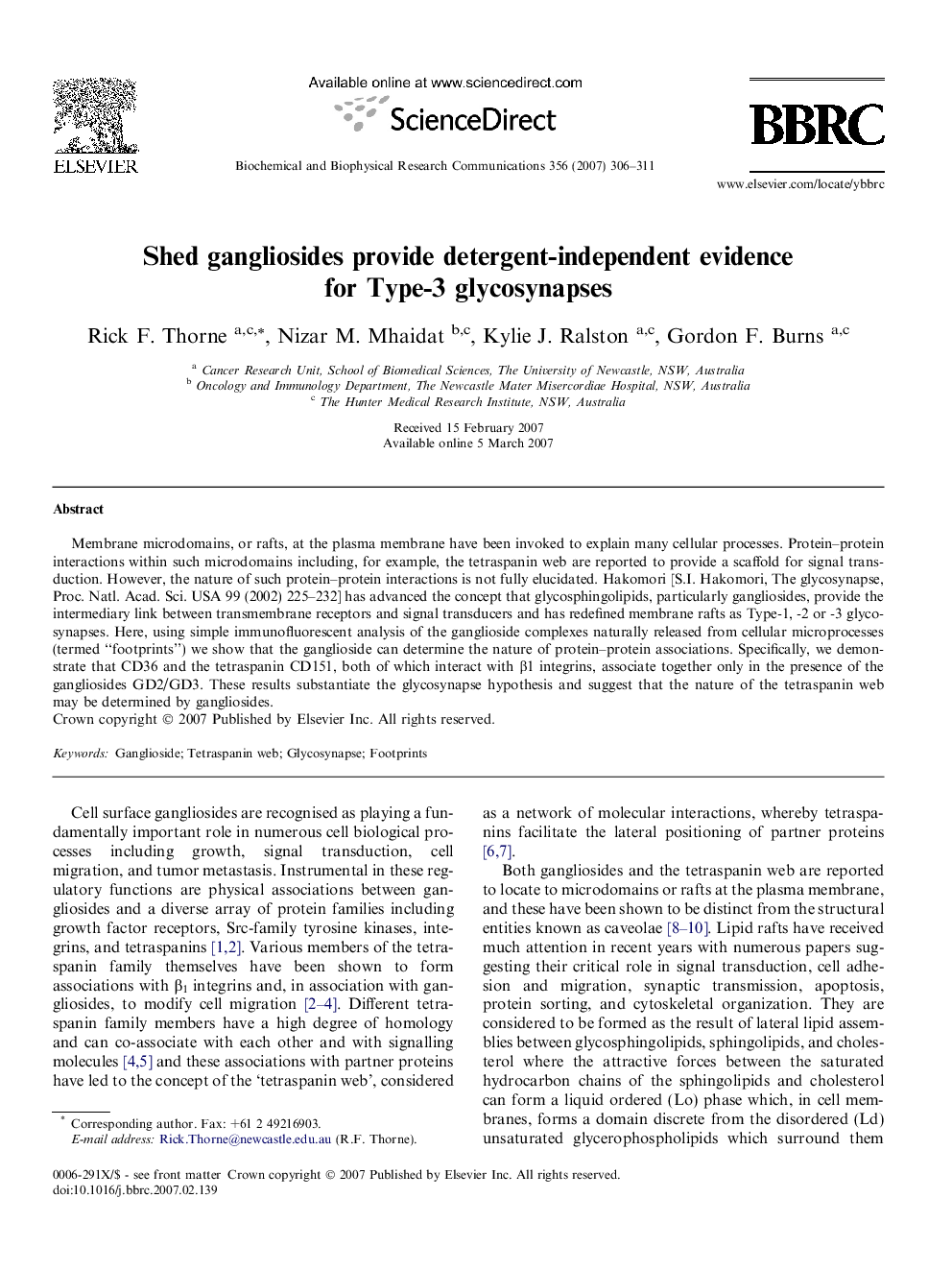| Article ID | Journal | Published Year | Pages | File Type |
|---|---|---|---|---|
| 1938666 | Biochemical and Biophysical Research Communications | 2007 | 6 Pages |
Membrane microdomains, or rafts, at the plasma membrane have been invoked to explain many cellular processes. Protein–protein interactions within such microdomains including, for example, the tetraspanin web are reported to provide a scaffold for signal transduction. However, the nature of such protein–protein interactions is not fully elucidated. Hakomori [S.I. Hakomori, The glycosynapse, Proc. Natl. Acad. Sci. USA 99 (2002) 225–232] has advanced the concept that glycosphingolipids, particularly gangliosides, provide the intermediary link between transmembrane receptors and signal transducers and has redefined membrane rafts as Type-1, -2 or -3 glycosynapses. Here, using simple immunofluorescent analysis of the ganglioside complexes naturally released from cellular microprocesses (termed “footprints”) we show that the ganglioside can determine the nature of protein–protein associations. Specifically, we demonstrate that CD36 and the tetraspanin CD151, both of which interact with β1 integrins, associate together only in the presence of the gangliosides GD2/GD3. These results substantiate the glycosynapse hypothesis and suggest that the nature of the tetraspanin web may be determined by gangliosides.
